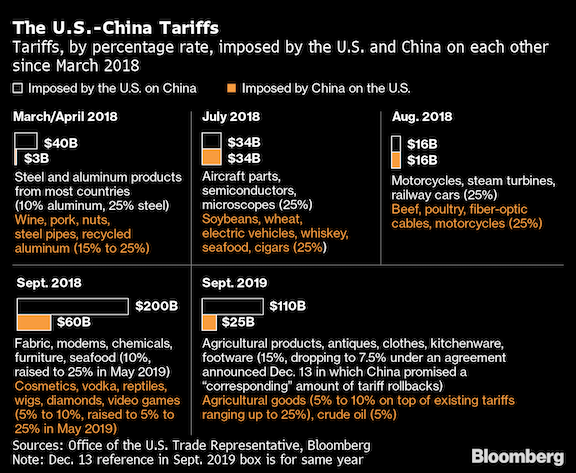The Biden administration is taking the first step toward a review of tariffs on more than $300 billion in Chinese imports that’s required to keep them from starting to automatically expire in July.
The U.S. Trade Representative’s office is notifying representatives of domestic industries that benefit from the duties of their possible end at their four-year anniversary, and the opportunity to request that they remain, it said on Tuesday.

It’s very likely that a domestic industry benefiting from the tariffs will ask for them to remain in place, according to trade experts. The USTR is sending notice of the expiration to about 600 stakeholders, the officials said.
The evaluation is officially known as a “review of necessity,” relates to Section 301 of the Trade Act of 1974. President Donald Trump used that law to hit China with the tariffs ranging from footwear and clothing to electronics and bicycles and even pet food starting in July 2018 after an investigation that concluded China stole intellectual property from American companies and forced them to transfer of technology.
Although the Trump White House instituted the tariffs in four different batches during 2018 and 2019, the review—if requested—will include all of them, administration officials said on a call with reporters.
While some businesses have benefitted from the tariffs protecting them from Chinese import competition, others who use the Chinese imports as inputs in areas including manufacturing have been hurt by them. Both Democratic and Republican lawmakers have pushed the Biden administration to broaden and deepen the exclusion process for the tariffs and review past product denials.
The Biden administration in March announced plans to reinstate exemptions from the Trump era on about two-thirds of Chinese products that were previously granted waivers from tariffs, most of which expired by the end of 2020.
The main considerations in whether to reinstate the exclusions were whether a product or comparable product was available from sources in the U.S. or in third countries, and changes in the global supply chain since 2018. They also included efforts by importers or U.S. purchasers to source the product from the U.S. or third countries, and domestic U.S. capacity to produce the product.










